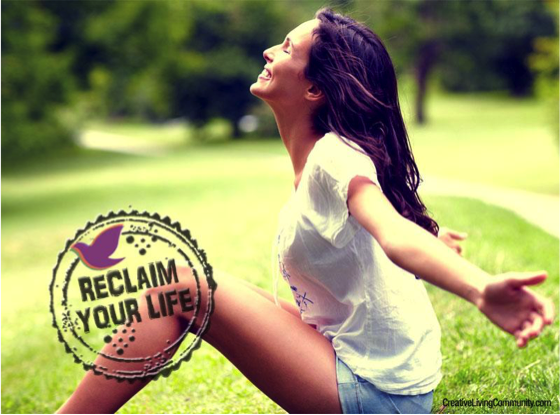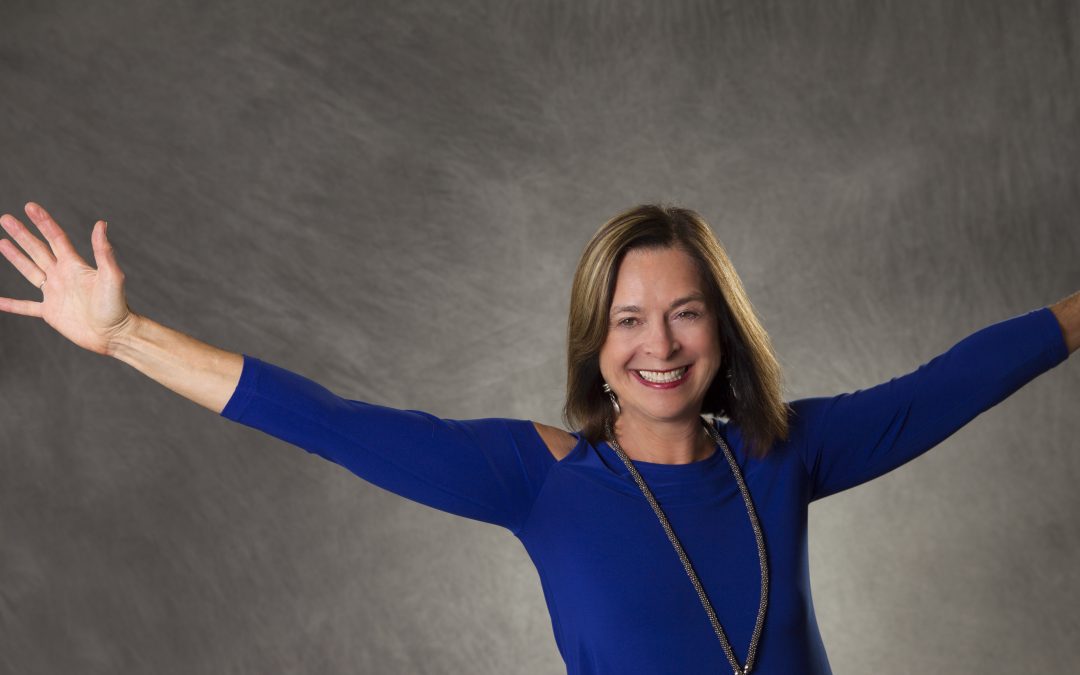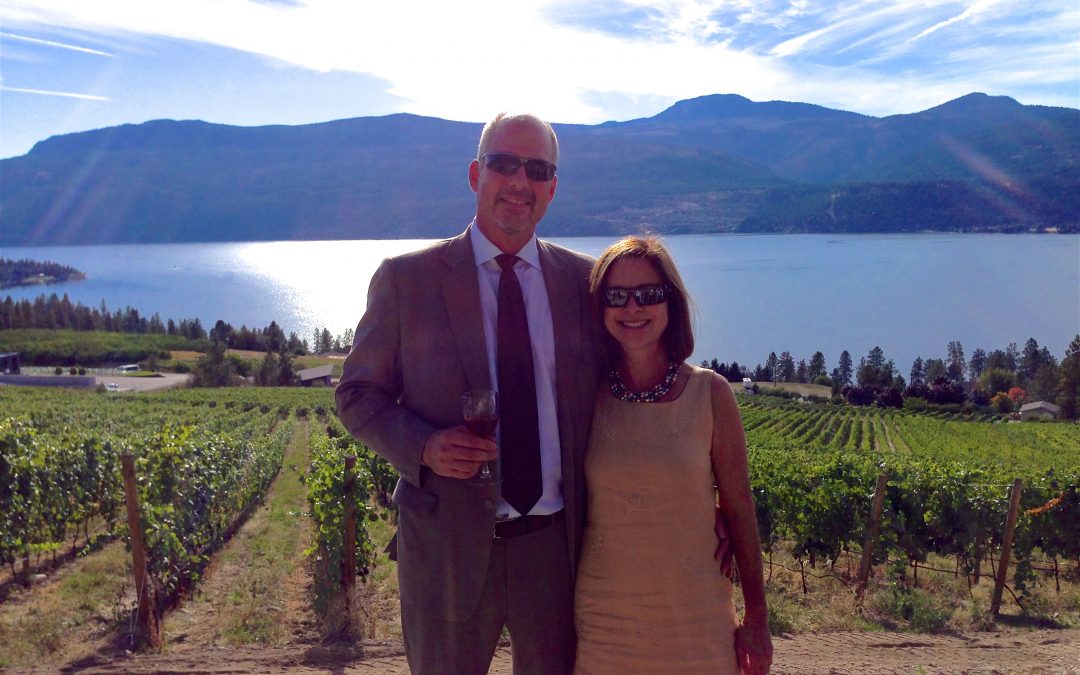
by pam | Jan 24, 2017 | Conscious Living, Creative Living, Self-Care, Stress Management, Women in Business, Work/Life Balance
Do you habitually check the news feeds on your smartphone before falling asleep?
On awakening do you check Facebook on your phone?
Are you finding it challenging to fall asleep, and do you often awaken feeling unrested?
Do you feel stressed, and have difficulty focusing?
If you answered “yes” to any or all of the above questions, you are not alone, AND you may benefit from a digital detox.
What exactly is a digital detox? According to Wikipedia, a digital detox “refers to a period of time during which a person refrains from using electronic connecting devices such as smartphones and computers.” It is recommended that you do a digital detox for 24 hours or more.
The Evidence[1]
Did you know that:
- 67% of cellphone owners find themselves checking their device even when it’s not ringing or vibrating
- One out of ten Americans report depression; heavy internet users are 2.5 times more likely to be depressed
- 95% of people use some type of electronics in the hour leading up to bed, and
artificial light from screens increases alertness and suppresses the hormone melatonin by up to 22% negatively affecting sleep, performance and mood
- Unplugging for just one day can give some users mental and physical withdrawal symptoms.
The Benefits of a Digital Detox
Scientific studies and social experiments have noted the following results from digital detoxing:
- Reduced anxiety
- Improved sleep/reduced fatigue
- Increased productivity
- Increased connection with self and others leading to improved relationships
- Improved focus
- Increased creativity
- Increased energy
- Improved memory
- Increased clarity
- Enhanced health
Getting Started/How to do a Digital Detox
Frances Booth[2] shares some valuable suggestions on how to do a digital detox. She and others recommend the following.
Create a Positive Mindset
Identify for yourself why you want to do the detox and the benefits it will provide. While thinking about each benefit, imagine how you will feel in your body when you have achieved it. For example, how will it feel to be more productive, more creative, more connected to family and friends, more relaxed. … .
Plan Ahead
Identify a 24-hour period when you want to try a digital detox. Ideally make it a weekend or a time when you aren’t working. Tell your family and friends your plans, and why you’re doing it.
Plan some time in nature, as being among trees reduces blood pressure, reduces your heart rate and increases the number of natural killer cells your body produces.
Plan some one-on-one time with your partner, a friend or your family to truly connect with them.
Ask for Support
Tell your family and friends of your plans, and why you’re doing it.
You may wish to invite a partner or friend to do the detox with you. Support is important when changing any behavior.
Notice How You feel and Express Yourself
When you start the detox, notice how your feel. It’s not unusual to be fidgety and have some withdrawal symptoms. You may find it helpful to write down your feelings. If you feel the urge to connect, take some deep breaths in through your nose and out through your mouth. Experience the feelings rather than “pushing them down”.
During the detox and after, notice what you notice and write down those feelings.
Make Digital Detoxing a Habit
The more digital detoxing you do, the easier it becomes. Try unplugging for at least 90 minutes before you go to bed each night. Go offline for 24 hours each weekend.
Parting Words
I love the tagline of http://digitaldetox.org/ “Disconnect to Reconnect”. Unplugging is relatively easy, yet the results are profound.
An Invitation
I invite you to try a digital detox. If you’ve already tried one, please share your experiences and comments below. Share this post with people you care about who could benefit.
[1] http://digitaldetox.org/manifesto/
[2] http://www.forbes.com/sites/francesbooth/2014/06/13/how-to-do-a-digital-detox/3/#7461fa00253e

by pam | Dec 6, 2016 | Benefits of being in nature, Conscious Living, Creative Living, Self-Care, Stress Management
The holidays are a time of joy, laughter, connecting with family and friends, and celebration. They also may be stressful on our bodies, minds and “pocket books”. With our already busy lives; extra baking, shopping, gift-wrapping, and entertaining can make us feel like there aren’t enough hours in the day.
Here are a few tips to help you to stay healthy, happy and mindful during the holidays and beyond.
- Take time for you – Holidays are a time to give to others, and they are also a time to give to yourself. Schedule time in your day for that yoga class, to go to the gym, for that bubble bath. Rather than jumping out of bed each morning and “hitting the ground running”, do a full body stretch; close your eyes and scan your body from head to toe noticing any areas of tightness or discomfort. Breathe into those areas and release that tension or discomfort.
- Spend time in nature at least 3 times a week (for 15 to 30 minutes or more). Being in nature is SOoo therapeutic. Focusing on the beauty that surrounds you takes your busy mind off that never-ending “to-do” list. Did you know that the Japanese have done longitudinal studies that show when we spend time in forests (they call it forest bathing or forest therapy) it reduces our heart rate, reduces our blood pressure and increases the number of natural killer cells our body produces; which means it strengthens our immune system. During stressful times it is particularly important to keep our immune systems strong so we don’t end up with that flu or cold after our guests leave!
- Celebrate YOU! At the end of each day identify at least one thing you want to celebrate about yourself for that day. It could be something you accomplished or how you responded in a stressful situation. When you constantly give to others without nourishing and celebrating yourself, you will become depleted and may also become resentful and/ or ill.
I’d love to hear your strategies for staying happy, healthy and mindful during the holidays. Please share them below. Feel free to pass this on to others you care about.
[1] Here is a useful resource on mindful eating: http://thecenterformindfuleating.org/

by pam | Nov 8, 2016 | Body-centered coaching, Conscious Living, Creative Living, High Achieving Women, Proven strategies, Stress Management, Women in Business
I invite you to ask yourself the question, What would I do if I had no fear? Notice what comes up. You may get a message “Leave my job.” “Leave my marriage.” “Start that business I’ve been wanting to for awhile.” If you get a message, then notice how your body feels when you receive it. Do you feel tension, or excitement about new possibilities? You may then ask yourself, What’s the worst thing that could happen if … I leave my job, leave my marriage, start that new business? Notice again what messages and feelings come up for you.
The Importance of Listening to Your Body’s Wisdom
What I know to be true from my own journey and work with clients around the world is that our body always knows the truth. When we stay in a job or relationship that no longer serves us, it takes a lot of energy. We are living out of alignment with what Buddha calls our “true self” wants; what we intuitively know is the best choice for us. I’ve made a number of “pros” and “cons” lists over the years based on my rational left-brain. However, the decisions I’ve made solely from using my logical left-brain, have not always been the right ones for me. The ones I’ve made by going inside and listening to my body have always been the “right” ones.
What happens when We Don’t Listen
One of the keys to Creative Living[1] in my book Learning to Dance with Life is “Listen to and Trust in Your Body’s Wisdom”. There is increasing evidence of the negative impacts on our body of NOT listening to the messages it sends us. Dr. Gabor Mate, in his book When the Body Says No, provides case studies and research evidence linking stress with cancer and auto-immune disorders. Ruth Buczynski, licensed psychologist and President of the National Institute for the Clinical Application of Behavioral Medicine (NICABM), wrote that the high stress of our complicated lives “can wreak havoc on our brain’s ability to control emotions, maintain focus and perform tasks”- http://www.nicabm.com/nicabmblog/the-brain-under-stress-using-mindfulness-to-regain-focus/). When we stay in jobs or relationships that are stressing us out, over time this leads to negative impacts on our health and also negatively affects our performance at work.
Tools to Enhance Body Awareness
In my work with clients I teach a number of tools and techniques to assist them to listen to and trust in their body’s wisdom. It takes some time and practice, however the benefits are amazing! Imagine being able to ask yourself about a decision you are challenged to make, and being able to go inside your body and “know” the truth/the best choice for you? Imagine being able to trust that the decision you are making will bring positive results to you, instead of deliberating for days and a number of sleepless nights over what to do?
A good place to start is with Body Scanning, a mindfulness technique from Eastern psychology. This practice cultivates the ability within you to live “in the present moment”. When you do a body scan, you take the time to notice and feel your body’s sensations. A good time to do this is in the morning on awakening. Rather than leaping out of bed and “hitting the ground running” make a conscious effort to quiet your mind and scan your body from the top of your head to the tips of your toes. Notice any tension or discomfort; breathe into these areas and consciously release and let of the tension. – See more at: http://creativelivingcommunity.com/how-you-can-find-peace-amidst-the-chaos-of-daily-life-work/
Another tool that I’ve found really helpful to “get out of my head” and “into my body” is Mindfulness Walking Meditation. When you do a mindfulness walking meditation outdoors, you feel the ground beneath your feet, the breeze against your face, and the cool air flowing through your nostrils down into your lungs. You smell the salt sea air or the aroma of lilacs, and you observe the scenery around you. Rather than spending your time constantly thinking about and processing all the things you have to do, you stay present and experience all of nature’s beautiful sights, smells, sounds and sensations.
My challenge to you
I encourage you to try one or both of the tools above. Begin with one and start incorporating it into your life on a daily basis. Notice how you feel in the moment and over time. I’d love to hear your experiences below with trying these tools. I invite you to share your own tools and techniques for listening to and trusting in your body’s wisdom and the results you’ve achieved from doing so. Feel free to share this post with others.
[1] http://creativelivingcommunity.com/what-is-creative-living/

by pam | Oct 25, 2016 | Beliefs & Values, Conscious Living, Creative Living, Proven strategies, Stress Management, Women in Business
What is conscious choice?
Sen defines it as “when you are making choices with the full understanding of reality, from a place of inner freedom, rather than making choices from a place of delusion/ignorance or fear-based motivations.”[1]
Brady views conscious choice as (making) “choices that are conscious, free from knee-jerk reactivity, and (being) mindful of the impact they have on (y)our own well-being, as well as the impact they have on others and the larger environment. “ [2]
What do our lives look and feel like when we don’t make conscious choices?
We make choices based on what we think someone in our position should make, or based on wanting to belong to a particular group, and thinking there is a particular way we need to speak and act to be accepted by that group.
We study and become; for example, a physician, because that’s what our parents want us to be; instead of following our heart and studying something we are passionate about.
We get into relationships based on the type of partner we’ve been socialized to choose, or to satisfy a need we have. For example, believing that we need to marry someone who will provide us with financial security above all else, or becoming a rescuer and getting involved with needy people to help them, rather than choosing a true partner who will support us to learn and grow in positive ways, and us them.
We respond to family members, friends or colleagues reactively based on previous conditioning or fears that we have. We jump to conclusions, become angry and lose control saying and doing things we later regret. This distances us from people and makes us feel alone and misunderstood.
Making unconscious choices can cause a lot of unhappiness, conflict, stress, disengagement, lack of fulfillment, and negatively impacts our relationships, careers and our health. When we don’t make conscious choices, we aren’t being true to ourselves.
So how can we learn to make more conscious choices? It’s a process and a journey that requires commitment and a desire to learn and grow. The first step is learning to become more self-aware.
Proven Strategies to Increase Self-Awareness:
- Spend time on your own walking in nature, swimming, kayaking… and notice what you notice. Is your mind constantly active? What do you think about? Notice how you feel while in nature and while being physically active. Journal about your thoughts and feelings.
- Become aware of your emotions. Start noticing how you react to certain people and situations, and get curious around why that is. Is it due to past experiences? Does that person remind you of someone in your past who treated you badly? Does that person’s behavior make you feel unsafe?
- Clarify your values (refer to http://creativelivingcommunity.com/do-you-live-in-alignment-with-your-core-values/), and live your life in alignment with them
- Work with a coach
- Participate in personal growth workshops and/or group coaching programs
- Study and practice mindfulness. A good place to start is doing mindfulness walking meditations. [3]
What happens when you become self-aware and get in touch with your core values, passions, and who you really are? You are able to make conscious choices; ones that are aligned with your values, needs and passions, and that lead to connection, good health, happiness, fulfillment, and inner calm; instead of conflict, disengagement, stress, compromised health, unhappiness and lack of fulfillment. Which would you rather have in your life?
I invite you to try some of the strategies listed above and notice how they impact your life and your decision-making. I’d love to hear your strategies for becoming more self-aware and how you make conscious decisions. Share your comments below and feel free to share this post with others.
[1] Sen, Conscious Choice – http://www.calmdownmind.com/conscious-choice/ – posted on November 12, 2012
[2] Brady, Reaction Management: How to Make Conscious Choices – http://www.chopra.com/articles/reaction-management-how-to-make-conscious-choices
[3] A tool from Easter psychology that I have found extremely useful for getting “out of my head” and into my body is Mindfulness Walking Meditation. Mindfulness practices focus on the senses and feeling sensations and emotions in our bodies. When we do a mindfulness walking meditation, we feel the ground beneath our feet, we feel the breeze against our face, we feel the cool air going from our nostrils down into our lungs. We smell the scent of salt or the aroma of lavender in the air and observe the scenery in front of us. We try to stay out of our minds and experience our senses. Rather than spend a walk in nature constantly thinking and processing all the things we have to do, instead we stay present and experience nature and all of its beautiful sights, smells, sounds and sensations.

by pam | Sep 20, 2016 | Creative Living, Inner Peace, Proven strategies, Stress Management, Women in Business
In this high-paced, “plugged-in” world we live in, now more than ever it’s important to have tools to find peace amidst the chaos of daily life and work. I believe that we all have a role to play in helping build peace in the world. When we find inner peace and model it for others, we then help build peace in our families, our communities, our workplaces … the world. So how can you find peace? Here are some proven practices I use and teach my clients.
Starting the day off right:
- Rather than leaping out of bed and “hitting the ground running” make a conscious effort to quiet your mind and scan your body from the top of your head to the tips of your toes. Notice any tension or discomfort; breathe into these areas and consciously release and let of the tension.
- Do some conscious stretching. I incorporate some yoga stretches with crunches to awaken my body before I do anything else. Mindfully massaging different joints of your body from head to toe is also meditative.
- Meditate for 10 to 20 minutes. There are a number of digital products available to help you do this. I have found Deepak and Oprah’s 21-day meditation experiences helpful as they focus on a key theme, and each day break down the theme. In addition, beautiful nature sounds and music play in the background to assist you in relaxing and staying focused.
- Ground yourself. Being centered and grounded helps you to be more responsive rather than reactive when interacting with others. “For example, with our family members, when we are centered, grounded and at peace we truly focus on each individual and connect with them at the heart level. They then feel listened to, understood, accepted, and loved. Likewise in the workplace if a colleague gets upset or angry we can show empathy and understanding rather than reacting to them with frustration or as if they are a threat.”[1]
Here is a tool I have found extremely useful in helping me to get centered and grounded. I do this exercise at the start of every day and also before I head into an important meeting or go “on stage” for a speaking event. I go somewhere quiet (depending on the venue it may be a washroom stall), then close my eyes and take several deep breaths to get into my body. I imagine I have roots growing out of the bottom of my feet going deep down into the earth. Then I imagine drawing the earth’s energy coming up through my feet, legs and into my heart. I then imagine I have branches reaching up to the sky to access the universal or source energy (or whatever you wish to call it) and feel that energy coming down through my head and neck and into my heart. I imagine that I am grounded to the earth and to the sky. This enables me to be much more powerful in the work I do and to be less reactive and more responsive in my interactions with others at work or at home.
I’d love to hear what tools you use to start your days off right, and to find peace amidst the chaos. I invite you to try out any of the tools above and to share your thoughts and experiences below. Here’s to helping build peace in the world one person at a time!
[1] Thompson, Pamela, Learning to Dance with Life: A Guide for High Achieving Women, p. 144

by pam | Sep 15, 2016 | Change, Coping with Change, Letting Go, Proven strategies, Stress Management
Two nights ago we pulled out of our driveway leaving the home where we had shared many happy moments over the past 8 years. I had felt overwhelming sadness when I returned to ready our house for the new owners. I let the sadness wash over me rather than pushing it away, and realized this was part of the process of letting go of the home and life I had enjoyed.
Over the past week, we had sold and given away furniture and belongings, keeping in mind what would fit into the two-bedroom apartment we had rented. The last night in our home, my Sweetie and I shared our last romantic dinner on the deck, our last hot tub, the last night together in our home. We celebrated the ending of special times in this place and also the beginning of our new simpler and “down-sized” life.
When we left our home, bereft of all our furniture and belongings, I realized it was no longer our home, but rather a house for the new owners to make their own. I noticed that I had no sadness as we left, but rather a new sense of freedom and adventure. I also realized that I can make a home wherever I choose. By surrounding myself with a few possessions that bring me joy, choosing to connect with new people and places, and creating positive experiences with people I care about, that is what home is truly all about.
If you’ve experienced a similar situation I invite you to reflect on and share your thoughts and feelings below. Perhaps there is a relationship, a position, a place you haven’t completely let go of. Reflect on this. Here are some strategies to help you to finally let go.
1) Reflect on the end of a job, relationship, place you’ve lived in the past. Notice if any sadness or strong feelings come up for you. If they do, let them wash over you rather than resisting or pushing them away. You may also wish to journal about the situation or experience.
2) Forgive yourself or a person for a way you or they acted in the past. One way to do this is Suze Casey’s forgiveness process: Say the following aloud …
- “I forgive myself for believing that I have to beat myself up what I said. I wish I could take it back, but I can’t.
- I give myself permission to be kinder to myself – beating myself up doesn’t make it better.
- I choose to kind to myself by learning what I can from the situation and focus on the positive opposite.
- I can beat myself up, or I can learn and move forward. I choose to learn and move forward.
- I’m free to learn to be more in the positive vibration – it feels like me.
- The kinder I am to myself, the easier it is to learn and move forward.
- I use every situation as an opportunity to learn and move forward.” (http://suzecasey.com/)
3) Celebrate the ending and new beginning.
4) Surround yourself with people and possessions that bring you joy.
I look forward to reading your thoughts below. Feel free to share this post with others who you think might enjoy it.





